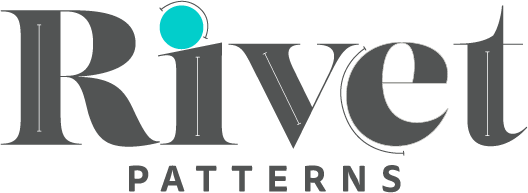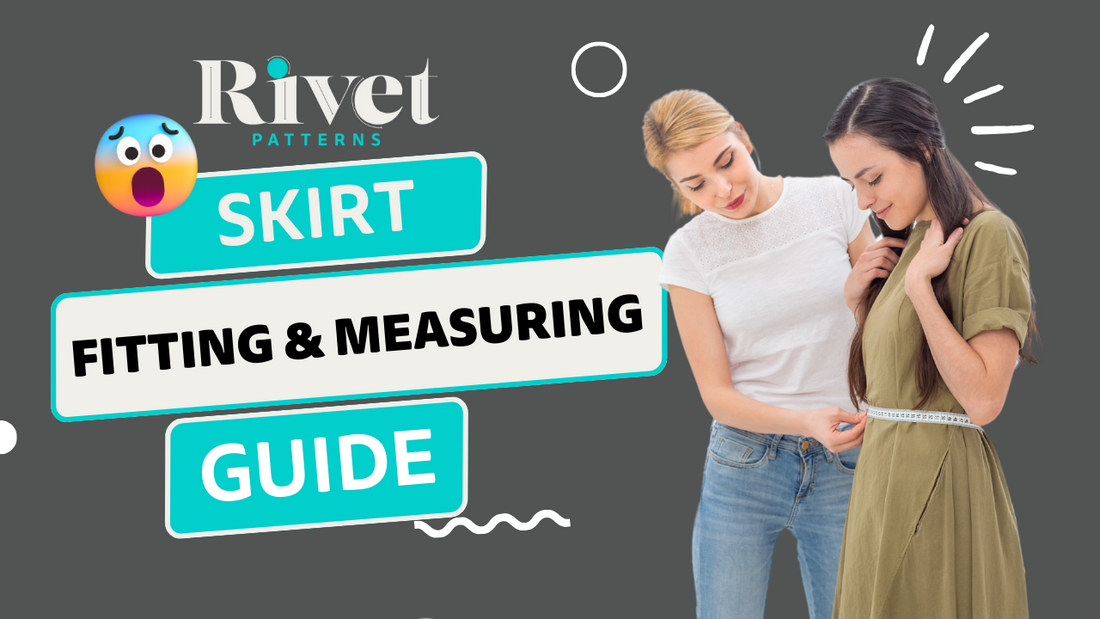Are you tired of making skirts that never seem to fit quite right? Do you struggle to figure out what you're doing wrong? Look no further! This blog post will provide you with a comprehensive skirt fitting and measuring guide to help you make skirts that fit YOUR body like a glove.
Generally speaking, skirts are much easier to fit than pants. You don't have the whole crotch curve situation to figure out. However, there are some simple things you can do to get a better fit with skirts, especially fitted skirts.
Let's dive right in and talk about measurements and talk about the measurements that we'll need to fit our skirt properly. Most skirts are based on the Natural Waist and Full Hip measurements. Another measurement that is pertinent in more fitted skirts is the waist to hip measurement. The waist to hip measurement is proportional to the side waist measurement (they are the same). You can find an in-depth look at these measurements here on the BLOG.
For your measurement, that's the part of your tush that is the widest. That varies a whole lot between bodies. It could be a few inches below your waist OR it could be closer to the tops of your thighs. Take a measuring tape and start at your waistline. Slowly move it down your hips, letting out the tape as you go. When the measurement starts to decrease again, STOP, and move back up to where the measurement was fullest. THAT is your full hip.
Now that you have the markers of Natural Waist and Full Hip, you can measure the distance between them for your Waist to Hip measurement.


Before we move on to how these measurements apply to fitting, we're going to take one more step. This mostly applies to fitted skirts, but it's a good concept to have in the back of your mind while fitting other patterns. We are going to incorporate your belly.
Most of us have a belly. Some might have a little, and some might have a lot - same as our tushes. While the full hip measurement takes into account our booty, it does NOT take into account our tummy. Why does having a belly matter? Because it takes up fabric real estate in the front, pulling the fabric forward. This leaves LESS room for your hip and results in drag lines from the hip to tummy area.
So, how do we account for the belly? It's actually pretty easy. Grab your straight ruler (or a piece of sturdy cardboard). Place the straight ruler against your belly, perpendicular to the floor (if you can get on your knees, or have a friend help, this is easier). Now remeasure your full hip. Do you see where there's that small gap between the straight ruler and the body? That adds in to your full hip measurement, increasing it.

This is now your new full hip measurement you will use when determining your size. Does it make your skirt bigger? Yes. It does. But it will also reduce those drag lines. You can grade your skirt back in to reduce fullness in the legs, if you wish. Olga over at Ageberry made a great video that you can WATCH HERE.
Now that we have our measurements, what do we DO with them? First, we adjust for length, and then we grade sizes. Let's say that Alex here ^^ has a 34" natural waist, a 44" full hip (when taking belly into account), and a 9" waist to hip measurement.
LENGTHENING OR SHORTENING FOR WAIST TO HIP
We're going to base our size on our natural waist, so for Alex, that is a size 10, grading to a size 12 hip. If we look at the chart, size 10 has a 7.75" waist to hip measurement, meaning we need to add 1.25" to get the hip curve in the correct spot. Draw a line at the full hip of the size 10. Halfway between the hip and the waist, make your cut horizontally and add (or subtract!) the length. If you need to add or subtract more than 1.5", I suggest making two horizontal cuts to make drawing the curve back in easier.

After you have adjusted for the waist to hip measurement, you'll want to take a look at the overall hem length. Maybe you have a longer torso, and shorter legs, so you will need to take out the length you added. You will do this BELOW the hip line. Depending on how much you are adding/subtracting and what hem line you have chosen, you may need to distribute your adjustment to several places.

All Rivet patterns have lengthen/shorten lines on them. You may need to adjust in a different area. Check out our Lengthening and Shortening a Sewing Pattern blog post!
GRADING
Now that you've got your skirt the right length in the right places, you can go ahead and grade for your size. Alex here needs to grade from a size 10 waist to a size 12 hip. We will draw a gentle curved line from the waist of the size 10 to the full hip of the size 12. If you need to grade the hip down, this method works conversely as well. You can check our our Grading a Sewing Pattern to fit YOUR Body blog post!

For further custom fitting, we're going to need a muslin! Make your adjusted skirt pattern up, but leave off the waistband. Instead, you're going to tie a piece of elastic at your natural waistline, or get a stretchy belt. Try on your muslin and tuck the waistline of the skirt just under the elastic to hold it in place.
Take a look in the mirror and assess the hemline. You want your hemline to be parallel to the floor. This may mean the waistline is no longer parallel. This is very, very important:
YOU WANT YOUR HEMLINE TO BE PARALLEL WITH THE FLOOR.

Does this make the waistline uneven? Yes. Yes it does. Now we're going to fix that!
FLAT BUTT
If your booty isn't as full as what the pattern is drafted for, you'll likely see extra fabric at the lower back, lines through the booty, and the side seam will swing towards the front at the hemline. Pull up at the center back of the skirt, until the side seam is straight and the hemline is even. On your pattern, you will remove that amount from the center back, tapering to nothing at the side seams.

SWAYBACK
The process for fitting a swayback is the same as a flat butt, but the cause is different. Swayback is when your center back measurement is shorter than what the pattern is drafted for, causing fabric to pool in your lower back. If you want to learn more about Swayback Adjustments you can check out the blog. Just like with the flat butt, pull up at the center back of the skirt, until you eliminate the extra fabric. On your pattern, you will remove that amount from the center back, tapering to nothing at the side seams.

FULL BUTT
If you have a fuller bottom than what the pattern is drafted for, the hemline may pull up at the back, and the side seam swing towards the back at the hem. To adjust, drop the center back down until the hemline is even and the side seam is straight. To adjust your pattern, you will need to add to the center back, tapering to nothing at the side seams.

FULL TUMMY
Earlier, we incorporated our bellies into our horizontal measurements. Here is where we incorporate it into our vertical measurement. If your tummy is fuller, you may see drag lines pointing to the belly, the skirt will pull up in the front, and the side seam will swing towards the front at the hemline. To adjust, drop the center front of the skirt until the side seam is straight and the hemline is parallel to the floor. To adjust your pattern, you will add that amount to the center front, tapering to nothing at the side seams.

HIP CURVES, HIP SHAPES, AND HIP DIPS
Our bodies are all shaped differently. You may find that your hip curve is higher up and has a steeper curve. Or that your hips are fuller for longer. 'Hip dips' or 'violin hips' are a very common shape, and actually due to our skeleton structure.
While you are customizing your skirt, now is a great time to fine tune the skirt's shape to your silhouette. To do this, turn the skirt wrong side out and put it on. Gently pin and baste out excess fabric until you are happy with how the skirt sits. Make sure to transfer these adjustments to your pattern for next time!

And there you have it! AWESOME! If you want to flex your new skills, and beef up your skirt pattern library, check out the Rivet Patterns Essential Skirts!
Happy Making!
Rachelle

